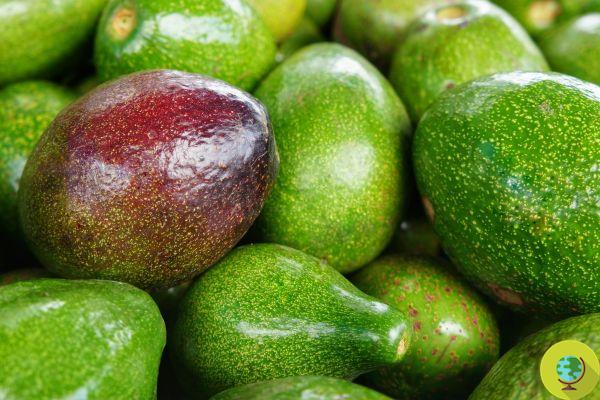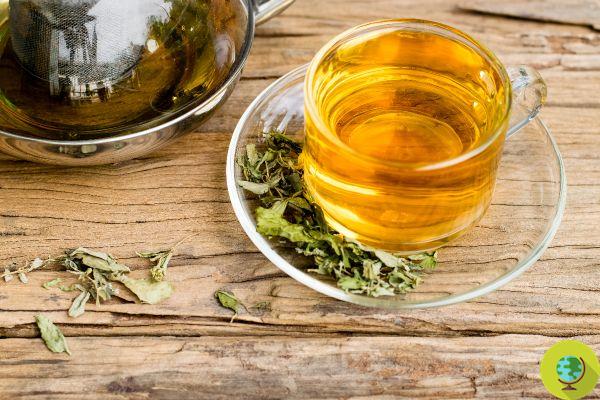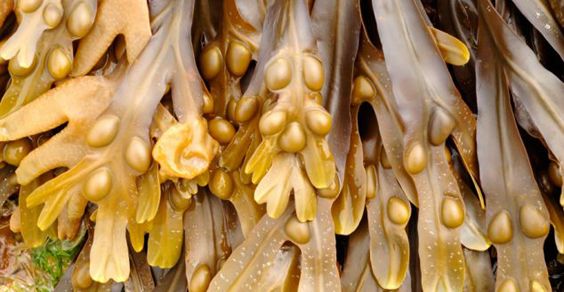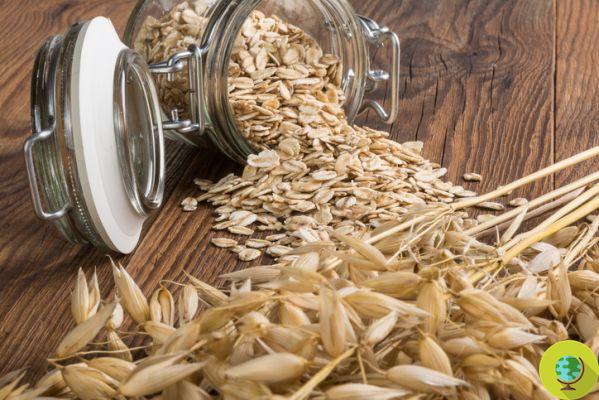Ever heard of Alchechengi? It is a plant of oriental origin whose berries have a very characteristic shape as well as being good and beneficial for health. Let's find out together all the properties and ways in which they can be consumed.
Don't store avocado like this: it's dangerous Alchecengi, what are the property and benefits of these berries? How can they be consumed?Never heard ofAlchechengi? It is a plant of oriental origin whose berries they have a very characteristic shape as well as being good and beneficial for health. Let's find out all of them together property and the ways in which they can be consumed, including some prescription.
Perhaps you do not associate the name with these small fruits, but surely you will have seen around the Alchechengi, an orange berry wrapped in a decidedly particular casing that makes it similar to a small lantern.
Index
Alchechengi, origins
Alchechengi is the fruit of the plant Physalis alkekengi which belongs to the family of Solanaceae. These are small berries that they look a bit like cherry tomatoes collected in a casing made up of very thin leaves that give it the characteristic appearance of lanterns, they are called for this "Chinese lanterns" and the plants they are also used to embellish the oriental gardens.
The Alchechengi plant it is native to Europe and Asia. The name that has been attributed to it derives from the Latinized Arabic word “al-kakang” which means precisely Chinese lantern.
These berries are particularly widespread especially in the East where they are frequently consumed when in season (they bear fruit in autumn) and are appreciated not only for their particular taste but also for their nutritional properties and beneficial effects on the body.
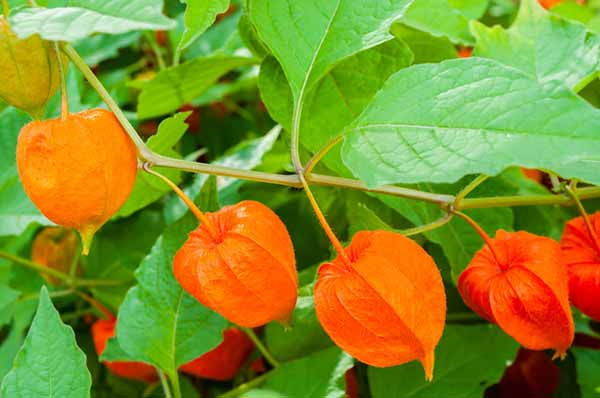
Let's find out all his now fantastic properties...
Alchechengi, property
Alchechengi is a fruit particularly appreciated by Traditional Chinese Medicine who uses it for example as a natural purifying remedy useful a stimulate diuresis and therefore perfect in the treatment of all those pathologies of the body in which there is stagnation of liquids. Also very useful for problems related to excess of uric acid since the substances contained in these berries ne fadvocate elimination through urine. In this case, not the fresh fruit is used but an extract based on its active ingredients, more concentrated.
Thanks to the presence of Vitamin C: and other active ingredients that promote the well-being of the immune system, these fruits are also useful for keeping seasonal ailments away as well as other types of infections such as cystitis. Furthermore, as we know, this vitamin is able to help the body in case of colds, flu, etc. favoring faster healing. This is why Alchechengi can be considered a bit like a natural aspirin.
They are also emollients, slightly laxative and rich in antioxidants.
Summarizing the property of the Alchechengi I'm:
- Diuretic
- Depurative
- Promotes the elimination of uric acid
- Helps the immune system
- Helps healing in case of colds, flu, cystitis
- Emollient
- Slightly laxative
- Antioxidant
Alchechengi, benefits
Based on the different properties it has, Alchechengi can be a good natural remedy in case of water retention but it can also help keep problems away stones, cystitis, gout and viral infections.
As part of a varied and balanced diet, Alchechengi can be consumed for strengthen the immune system and purify the liver.
In summary, the benefits of Alchechengi are highlighted in the case of:
- Water retention
- Kidney stones
- Cystitis
- Gout
- Viral infections
- Weak immune system
- Liver to be purified

Alchechengi, nutritional values and calories
The nutritional values of Alchechengi are very interesting. Especially noteworthy is the presence of vitamin C which is much higher than that of many other fruits (for example lemon).
100 grams of Alchechengi contain:
- Water 85,4 g
- G carbohydrates 14
- 2,38 g protein
- 0,97 g fat
- Vitamin C 11 mg
100 grams of Alchechengi they bring about 53 kcal to our body.
How to eat Alchechengi
Alchechengi can be eaten as it is, the important thing is to remove the wrapper in which the berries are located. The leaves that cover it are in fact not edible as they contain high doses of solanine, a toxic substance.
The berries are yellow-orange, they look like small cherry tomatoes, they don't contain much juice and they have a slightly sour taste which is somewhat reminiscent of tomatoes and raspberries but also citrus fruits. Before consuming the berries wash them very well in particular in the upper part, the one that was attached to the plant, where a resinous substance could be collected.
Alchechengi, how to choose and store it
If you want to eat fresh Alchechengi fruits, make sure they are a nice orange color and firm. They must not have dents or the cup be withered. If the fruit is ripe it can be kept in the fridge for about 2 days, the alternative is to freeze it by removing the glasses first.
If, on the other hand, the berries are yet to fully ripen, you can leave them at room temperature until they turn a nice orange color.
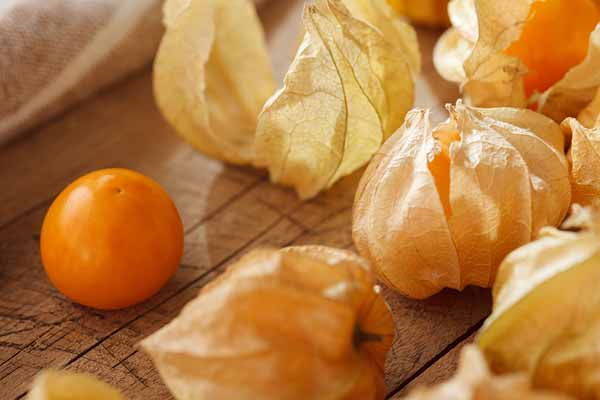
Alchechengi, where to find it
It might not be easy to find fresh Alchechengi berries, supermarkets hardly have them in the fruit-growing department. Instead, it is easier to find them in the local markets or in the shops specializing in exotic or oriental fruit. As for the dried berries you can buy them in herbalist shops or online shops.
Alchechengi, recipes
The simplest way to eat Alchechengi is to consume its berries as they are cut into pieces and maybe added to a fruit salad, or covered with chocolate.
Given its very particular flavor, it may not be easy to use Alchechengi in the kitchen. You can use both fresh and dried or powdered berries to make infusions or to flavor desserts.
We advise you now some simple recipes that you can experiment with.
Alchechengi infusion
This is more than a recipe a real natural remedy, especially useful for exploiting the diuretic potential of these berries. It can be prepared with dried berries (about 60 grams for each liter of water). After boiling the water, leave the berries to infuse for about 10 minutes and drink 2/3 cups during the day.
Alchechengi jam
The Alchechengi lends itself well to make a jam which can then be spread on bread for breakfast or as a snack but which can also be used for fill pies and cakes. Here you will find the recipe to make it.
Dark chocolate alchechengi
As we have already said, the Alchechengi go very well with dark chocolate. So here is a recipe to cover them and make them become one tasty snack, you can follow it step by step by reading here.
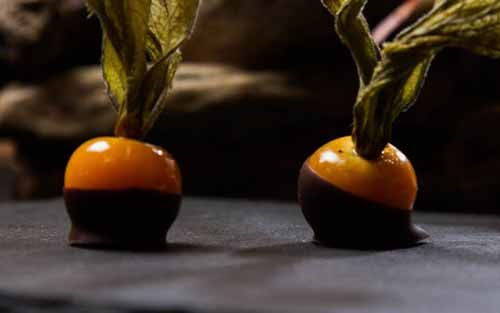 Gallery: nonnapaperina.com
Gallery: nonnapaperina.com
Risotto all’alchechengio
Not just sweet recipes. With these berries you can also make it without much effort an original and very special risotto. You can read a recipe here.
To know better other berries rich in properties see also:
- GOJI BERRIES: HOW MANY TO EAT AND HOW TO CONSUME THEM CORRECTLY
- ROSE HIP: PROPERTIES, BENEFITS AND USES AS A NATURAL REMEDY
- ACAI BERRIES: properties, BENEFITS AND WHERE TO FIND THEM
- THE 11 BERRIES OF HEALTH
Alchechengi, contraindications
Unless you have specifics intolerances or allergies to nightshades, the consumption of alchechengi has no major contraindications. If it is taken for curative purposes and if it is not consumed occasionally, it is good ask your doctor for advice if you use drugs (especially diuretics) at the same time. We remember that the leaves surrounding the berries should never be taken as they are toxic they can cause nausea, vomiting, diarrhea, headache and other annoying symptoms.




